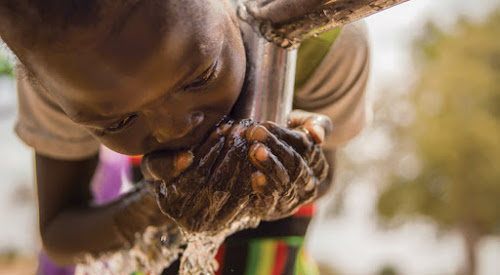Greater than 2 billion individuals lack safe drinking sprinkle. That number will just expand.
India has improved sprinkle access in backwoods, but remains at the first for large variety of individuals (163 million) doing not have sprinkle solutions. Ethiopia, second on the list with 61 million individuals doing not have clean sprinkle, has improved significantly since the last dimension in 2000, but still has a high portion of total residents without access.
Except any significant but not likely advancements, such as new methods to desalinate enormous quantities of seawater (SN: 8/20/16, p. 22), mankind will need to make do with whatever freshwater currently exists.
Most of the world's freshwater mosts likely to farming, mainly to irrigating crops but also to increasing animals and farming aquatic microorganisms, such as fish and plants. As the global populace increases, agricultural manufacturing increases to satisfy demand for more varied diet plans. In current years, the increase in sprinkle withdrawal from the ground or lakes and rivers has slowed down, whether for farming, markets or municipalities, but it still surpassed the rate of populace development since 1940.
That means every drop is progressively valuable — and difficult choices must be made. Grow your areas with sugarcane to earn ethanol for fuel, and you can't raise crops to feed your family. Dam a river to produce electrical power, and individuals downstream can no much longer fish. Pump groundwater out on your own, and your next-door neighbor might simply want to combat over it. Scientists call this the food-water-energy nexus and say it's among the greatest challenges facing our progressively developed, globalized and parched globe.Cara Ampuh Memenangkan Permainan Sabung ayam online

"There simply isn't enough sprinkle to satisfy all our needs," says Paolo D'Odorico, an ecological researcher at the College of California, Berkeley whose group evaluated the food-water-energy nexus in a paper released online April 20 in Reviews of Geophysics.
Overall, the power industry is expected to take in more and moremore and more sprinkle in years to find. And sometimes what seems like a smart idea — such as switching to renewable resource resources to decrease carbon emissions — might help in one location but hurt in another. For instance, it can take more sprinkle to expand biofuel crops compared to to take in nonrenewable fuel sources.
After that there is environment change. As greenhouse gases develop in Earth's atmosphere, capturing heat and changing the planet's weather and environment, sprinkle will become more valuable. Rising global temperature levels change weather patterns and change how sprinkle cycles in between the ground and the atmosphere. Freshwater stores can shrink. Severe occasions, such as swamping and dry spell, are ending up being more common on our warming planet (SN: 1/20/18, p. 6). That means more sprinkle in position where individuals do not need it, and much less sprinkle where they do.


